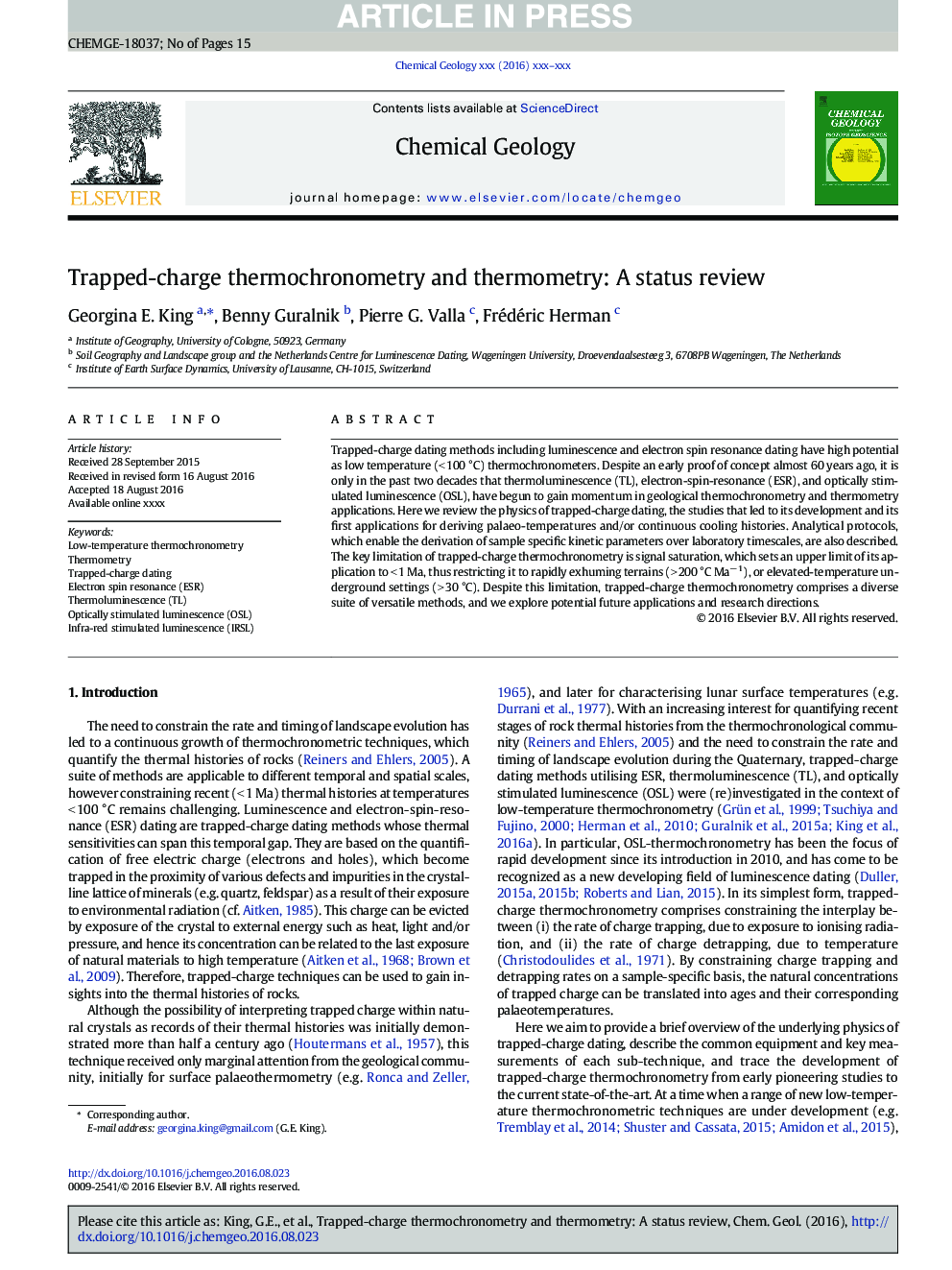| Article ID | Journal | Published Year | Pages | File Type |
|---|---|---|---|---|
| 5782877 | Chemical Geology | 2016 | 15 Pages |
Abstract
Trapped-charge dating methods including luminescence and electron spin resonance dating have high potential as low temperature (< 100 °C) thermochronometers. Despite an early proof of concept almost 60 years ago, it is only in the past two decades that thermoluminescence (TL), electron-spin-resonance (ESR), and optically stimulated luminescence (OSL), have begun to gain momentum in geological thermochronometry and thermometry applications. Here we review the physics of trapped-charge dating, the studies that led to its development and its first applications for deriving palaeo-temperatures and/or continuous cooling histories. Analytical protocols, which enable the derivation of sample specific kinetic parameters over laboratory timescales, are also described. The key limitation of trapped-charge thermochronometry is signal saturation, which sets an upper limit of its application to < 1 Ma, thus restricting it to rapidly exhuming terrains (> 200 °C Maâ 1), or elevated-temperature underground settings (> 30 °C). Despite this limitation, trapped-charge thermochronometry comprises a diverse suite of versatile methods, and we explore potential future applications and research directions.
Keywords
Related Topics
Physical Sciences and Engineering
Earth and Planetary Sciences
Geochemistry and Petrology
Authors
Georgina E. King, Benny Guralnik, Pierre G. Valla, Frédéric Herman,
